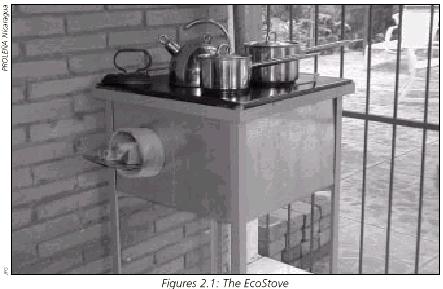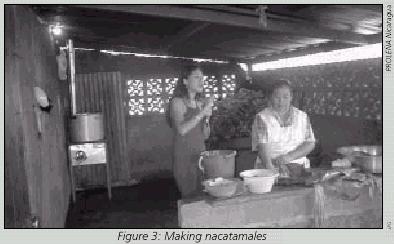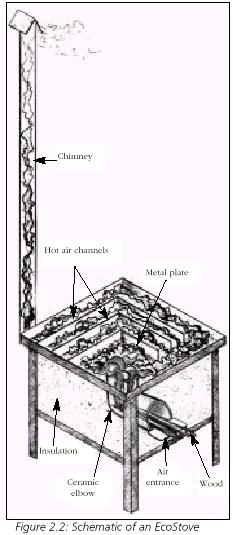
Case Study: Doña Luisa Hernadez
Besides caring for the home and child of a foreign
couple during the week,
Doña Luisa maintains a flourishing business in her
home selling nacatamales
during the weekend with the help of her daughter.
'The difference,' she says,
'is the huge savings in firewood.' With her old stove,
Doña Luisa complained of
'gripe' (watery eyes, stuffy nose, problems breathing,
headache and a chronic
cough); never-ending cleaning due to the particulate
matter buildup within the
home; economic difficulties stemming from the cost
of wood; and general
quandaries with the function of an open flame. 'Every
two to three days, we
would have to spend 80 córdobas (US $5.90) on firewood,'
says Doña Luisa.
The accumulated cost of wood proved to be a grim amount
for the family since
one entire nacatamale sells for only 8 córdobas (US
$0.59).

Doña Luisa works all weekend selling nacatamales,
soups and a sometimes a
traditional meat dish to people in her neighborhood
[Figure 3]. Now, she says,
'We don't breath in smoke, the plancha is much better
and hygienic and every-thing
is always clean. It is just much more economically
sensible.' Whereas she
used to buy 12-15 cords of wood to make two hours
worth of nacatamales,
she now only buys five or six cords to make the
same 80 nacatamales as
before. 'I help the family very much,' she says.
'And even more than before.
When I was using the old system, I was always sick
and buying wood. Now, my
cooking takes less time and costs less too.' Though
her husband does construc-tion
work, his job tends to be temporary and Doña Luisa
often supports the
entire family with her personal enterprise. Though
she rarely ever has time to
rest, the 130 nacatamales that she sells over the
weekend with the assistance
of her EcoStove helps to send her children to university.
'My husband thinks the
purchase of the stove was a good decision,' she
says with a laugh. 'Now we
have less problems.' |
|

channeled out through a chimney
(Figure 2.2).
Since there is only a small area
to add wood and there is insula-tion,
the consumption of fire-wood
and smoke production is
cut in half compared to an open
fire. In addition, the firebox, the
plancha (heat transfer surface)
and the chimney are all con-nected
by a sealed system, allow-ing
no indoor air pollution.
Rather than coating pots with a
layer of black soot from a tradi-tional
fire, women can place vari-ous
cooking materials on the sur-face
of the EcoStove without fear
that smoke will contaminate the
food. Moreover, they can cook
tortillas directly upon the surface
of the stove while the smoke is
channeled through the chimney.
This particular design alleviates
many of the conditions of a three-stone
fire that so directly damage
the health and economy of a
|